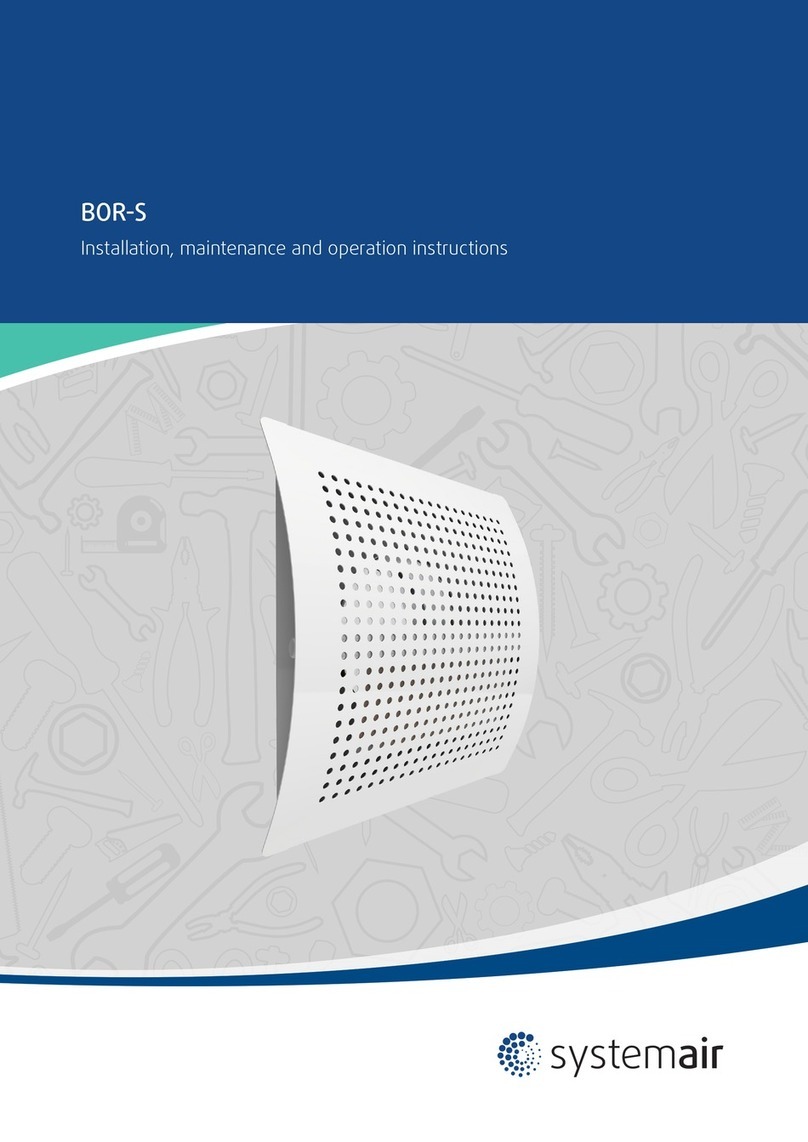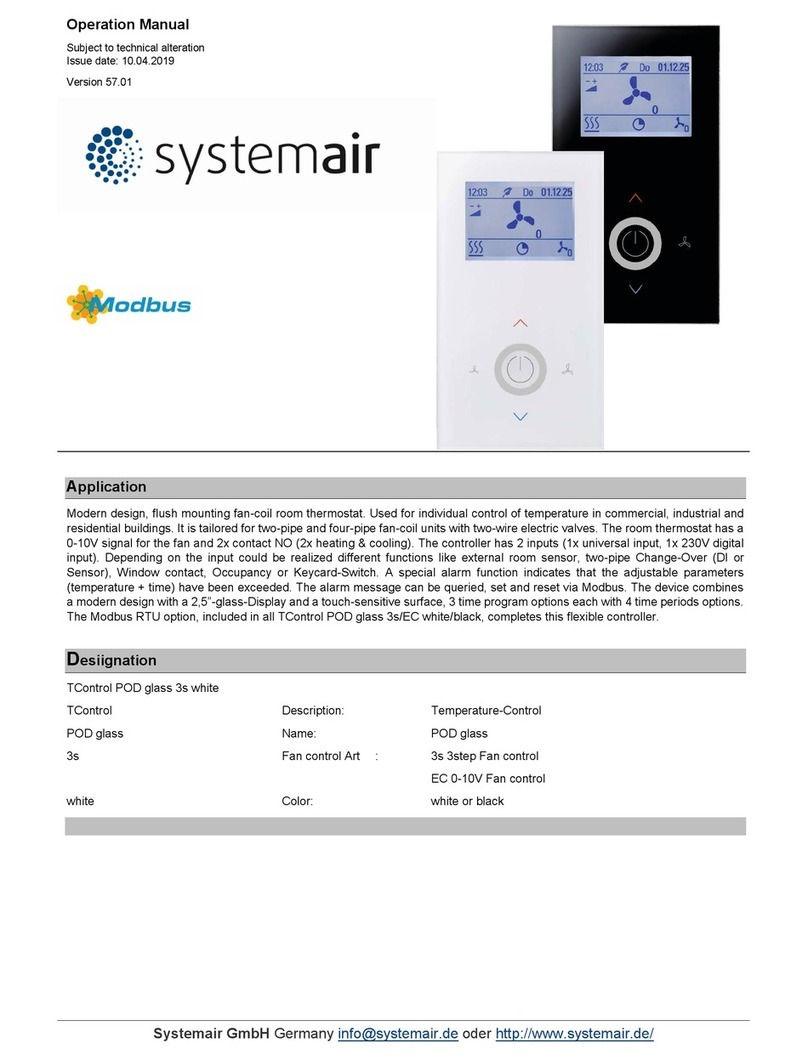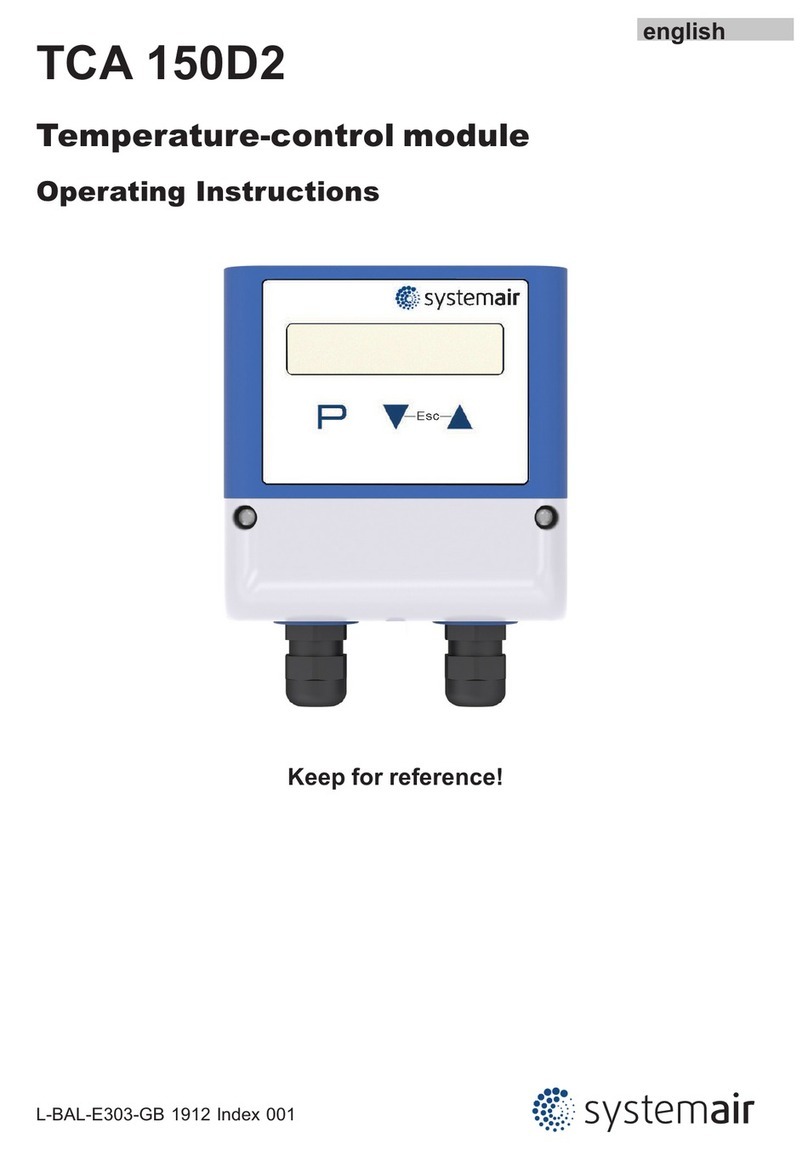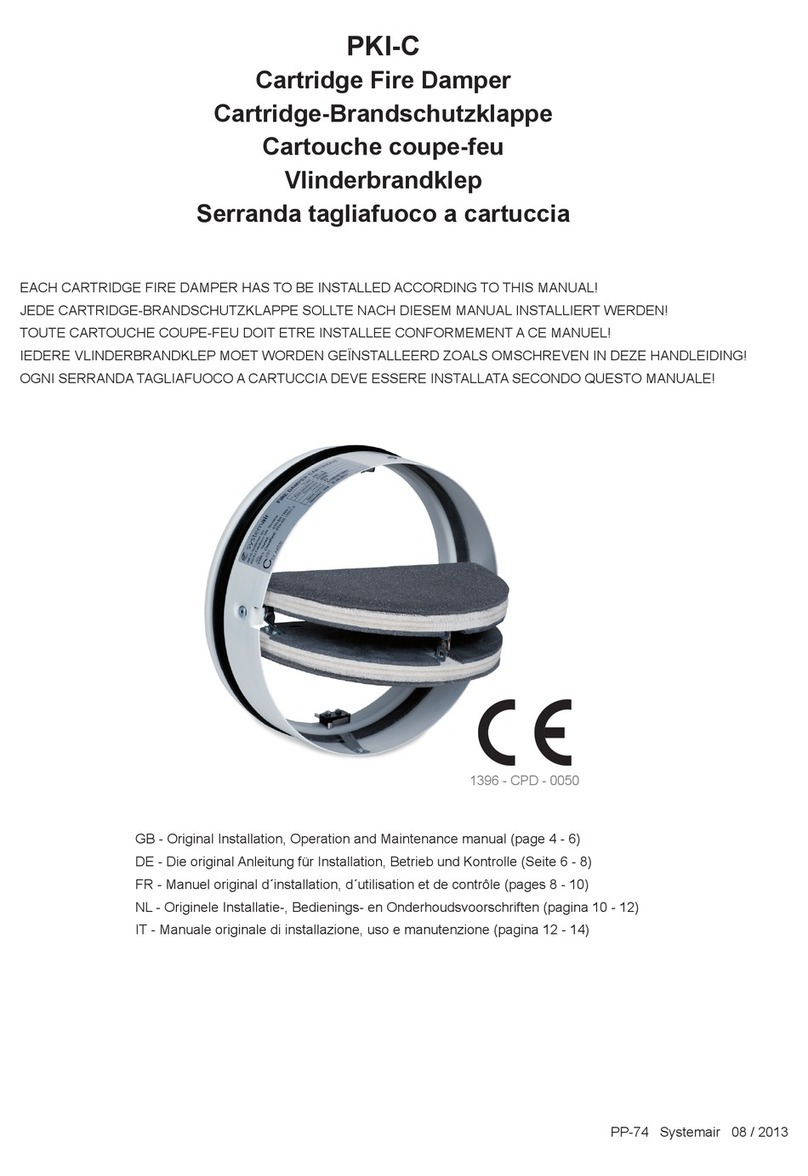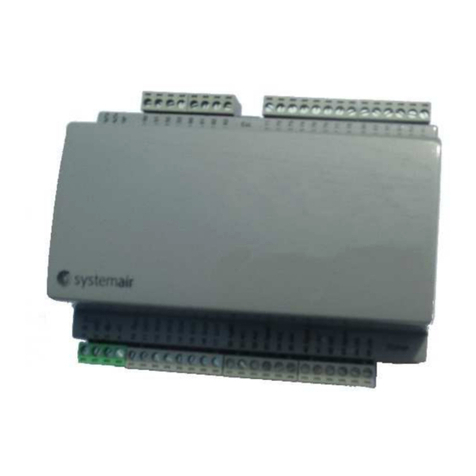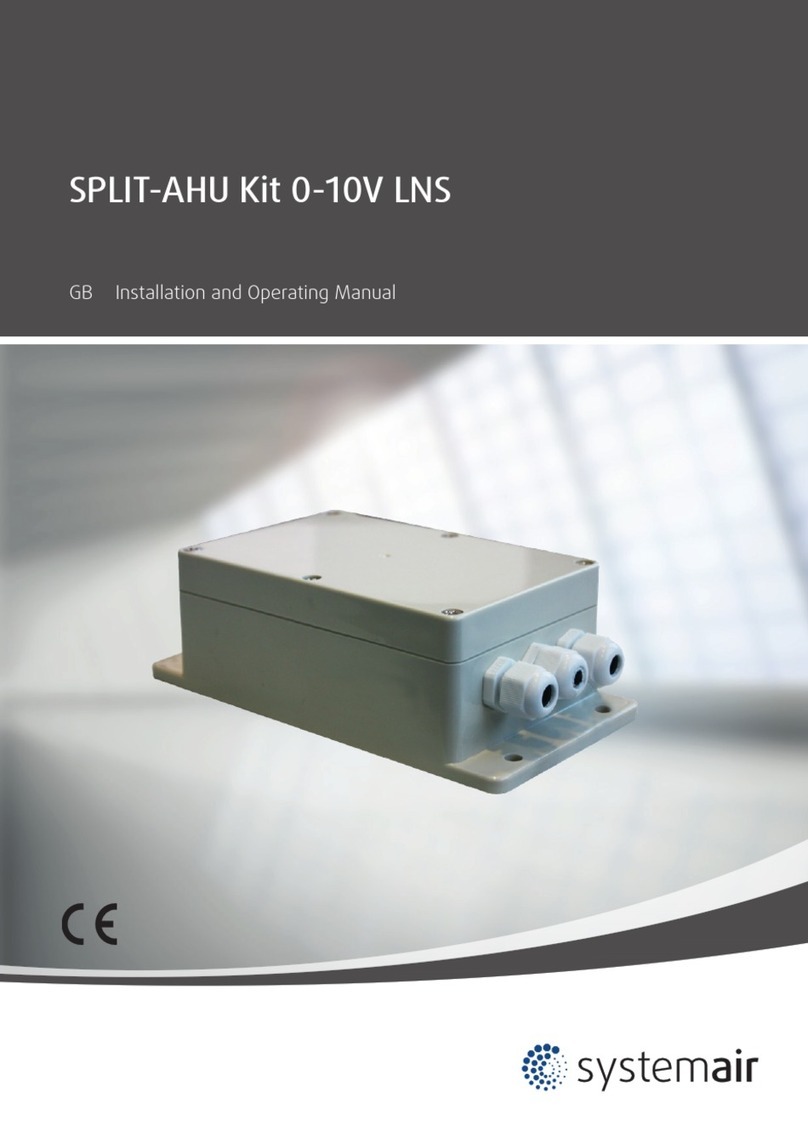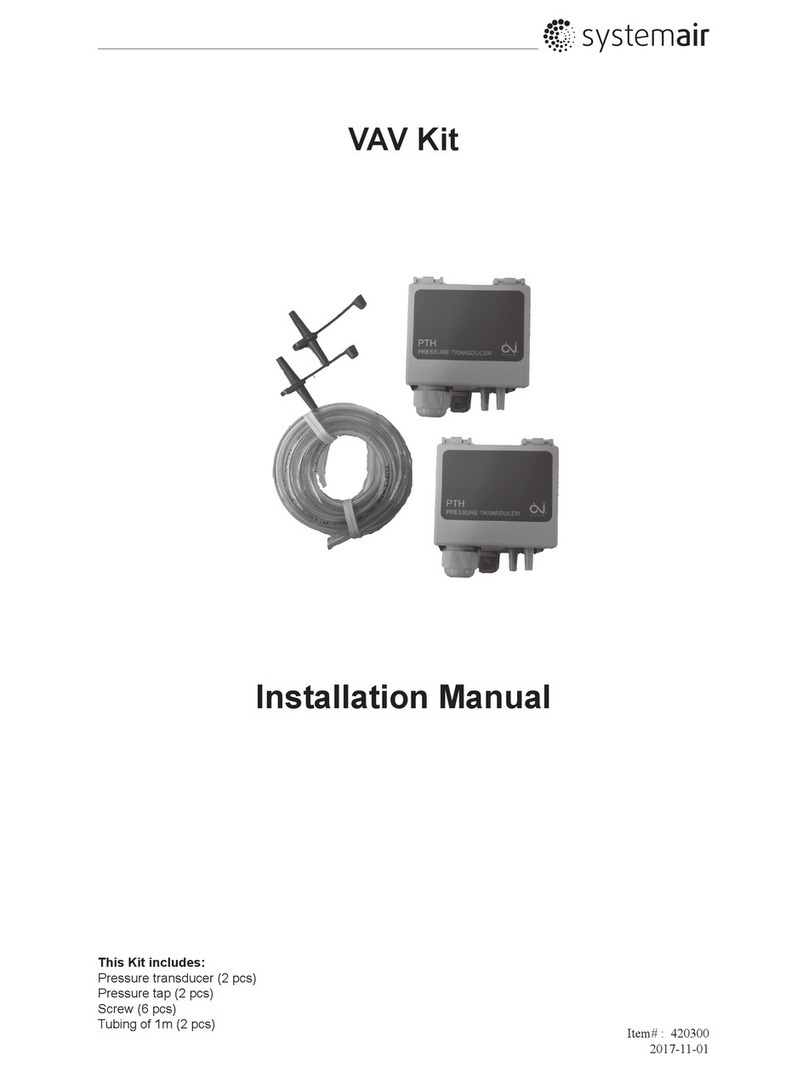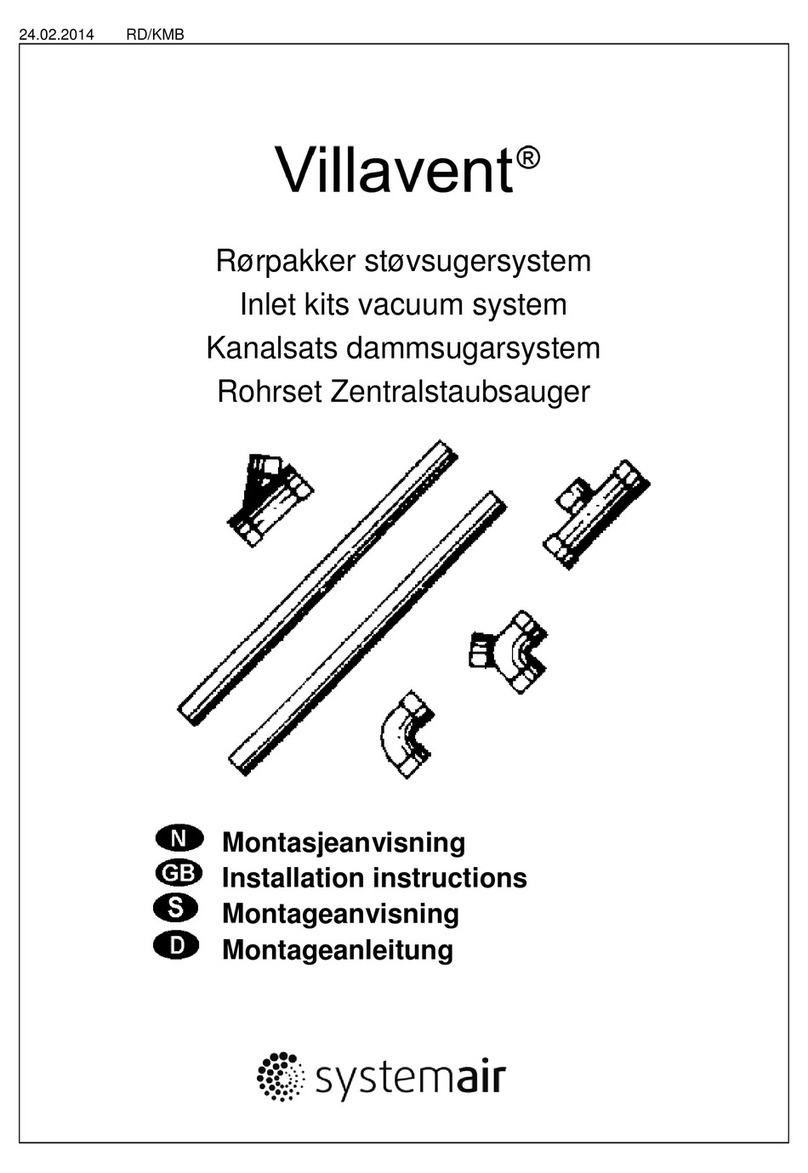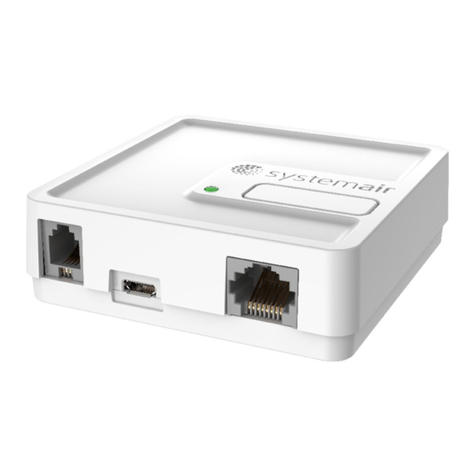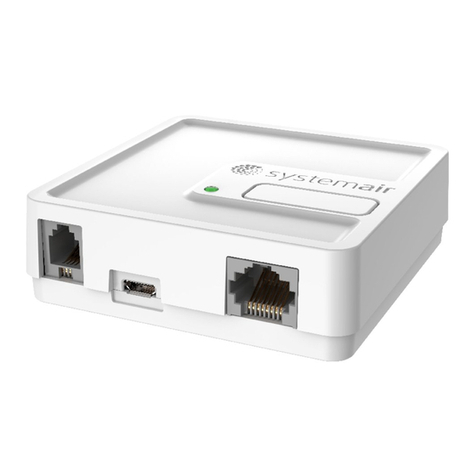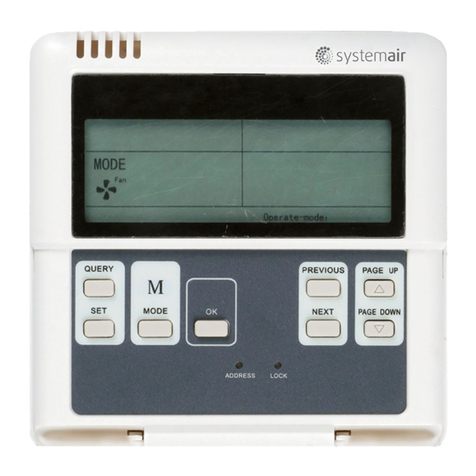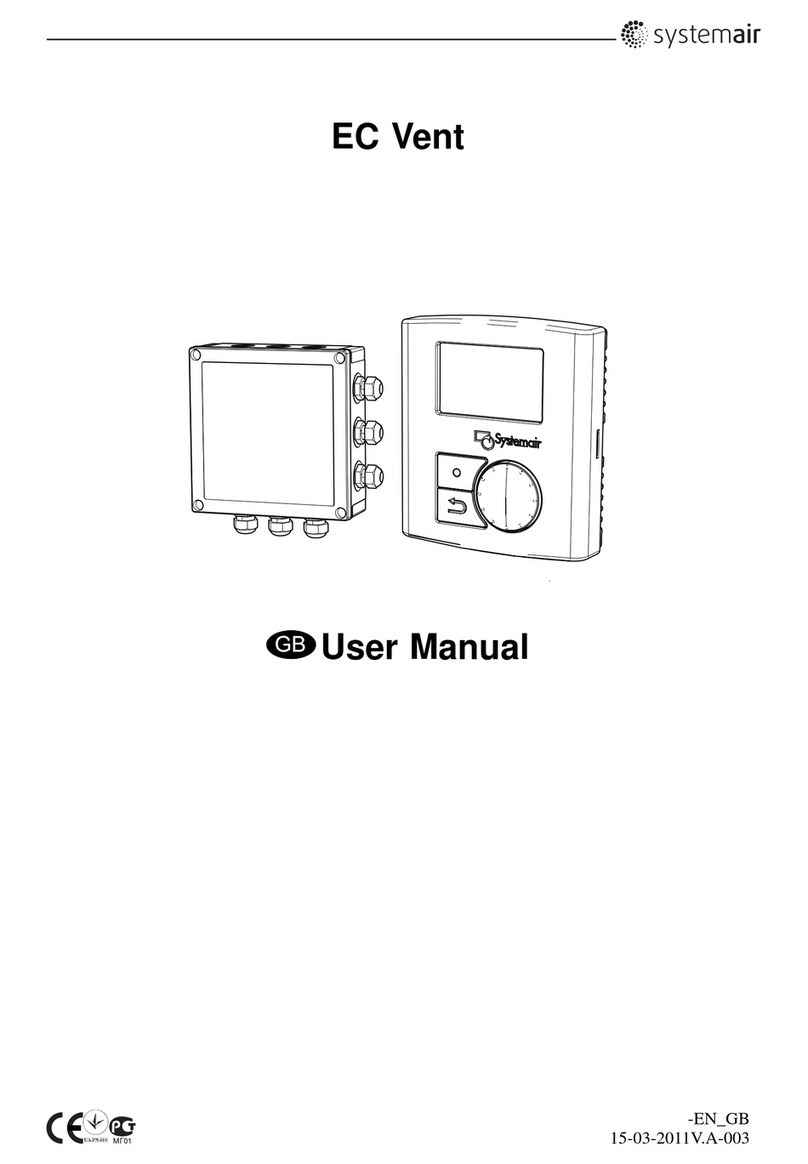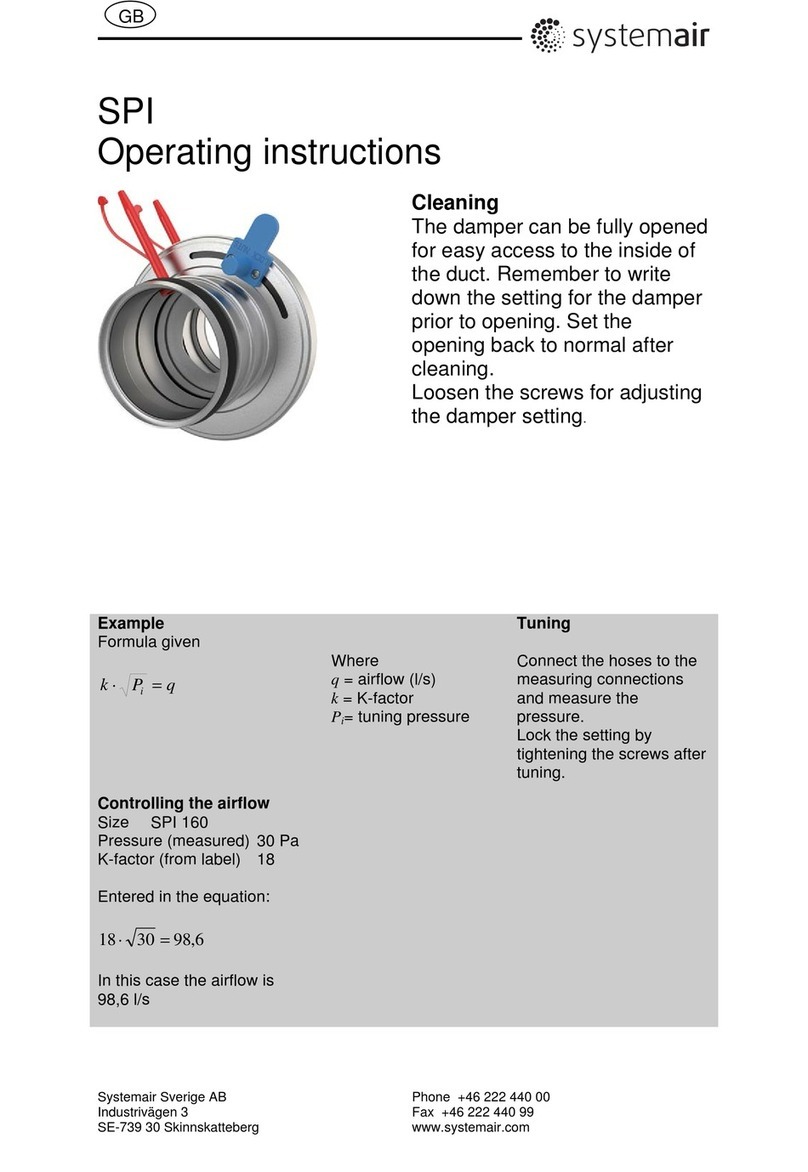4/20 | User Manual AM-PKI | 201805
Warnings
Some damper parts may have sharp edges; therefore, to protect yourself from injury, please use gloves during
damper installation and manipulation. To prevent electric shock, re or any other damage which could result
from incorrect damper usage and operation, it is important to:
1. ensure that installation is performed by a trained person.
2. closely follow the written and depicted instructions provided within this User Manual.
3. perform damper inspection in accordance with this User Manual.
4. check the damper’s functionality as per the chapter “Fire Damper Functionality Check” before you install
the re damper. This procedure prevents the installation of a damper that has been damaged during
transportation or handling.
Compatibility Check
Before installing an AM-PKI accessory, check the mechanism compatibility by comparing the 3-digit code provided
on the AM-PKI label with codes listed on the re damper body label. If your re damper label has your mechanism
compatibility code listed, the mechanism can be installed.
Use the AM-PKI Selector
IMPORTANT:
Fire dampers are delivered
with an order-specied activation
mechanism by default.
Use this accessory in case of a future
on-site damper upgrade.
Activation mechanism
Code: AM-PKI-DV1-2-Y94
Switches: DC 12/24 V, 3A; AC 125/230 V, 3A
Manufactured: 26.03.2018
IP 44
Y94
<50°C
&
Compatibility
code
BL BR WT RD OR PK GR
X:7 6 4 5 2 31
NCNOCNONC
Fire damper PKIS3G 1000X300 DV1-2. 3C
EN15650:10 guaranteed tightness
Art. No.: 136589
Cust. order. No.:
Pos. No.:
Order. No.: 0000769055
Manufactured: 26.03.2018
Customer: Systemair
Made in EU
IMOS-Systemair, a.s.,
Kalinkovo, Slovakia
14 1396-CPR-0077
INSTALL ACC. TO INSTALL. MANUAL
Fire resistivity depend on install. method
See fire resistivities label
3L2 3S2 3R2 Y94 Y90
produced with AM-PKI-DV1-2-Y94
Serial No.: 618104640001
Fig. 1: Example of an AM-PKI label (left) and re damper label (right)
